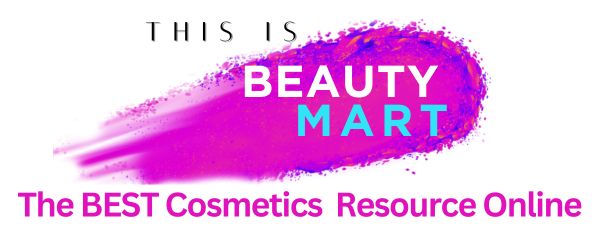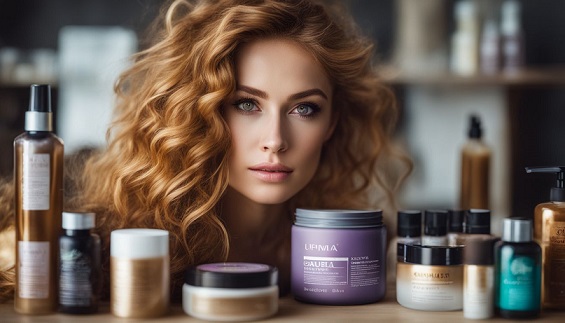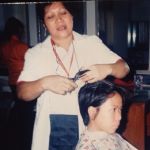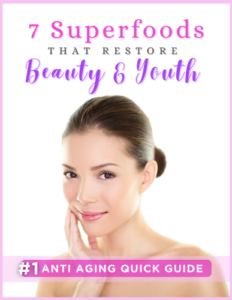Are you dreaming of going blonde without frying your lovely locks?
It’s true, bleaching can be tough on hair, causing damage that can take months to repair. But no worries.
This article is a comprehensive guide offering valuable tips and techniques on how to bleach natural hair without damage and safely in the comfort of your own home.
Ready to go lighter but smarter? Let’s dive in!
Key Takeaways
Table of Contents
Does Bleaching Your Hair Damage It Forever?
Bleaching can indeed cause significant damage to your hair, especially if continuously done without proper care.
The bleach process works by opening the hair cuticle and removing the natural pigment from the hair shaft, which leaves your tresses prone to dryness and breakage.
Excessive bleaching may lead to irreversible effects as it permanently changes your hair’s structure, especially so for black coarse hair.
Several other factors contribute to this lasting damage:
- tight hairstyles that tug on sensitive follicles
- constant re-bleaching sessions looking for that perfect shade of blonde or light brown
- excessive use of heat styling tools can all worsen the condition of color-treated hair
While some amount of damage is inevitable during a bleach session, minimizing these practices protects the health of your delicate strands in the long run.
What Can I Add to Bleach to Protect Hair?
Preparing your hair for a bleach job entails adding specific products to the mixture. These ingredients can help protect your strands from potential damage:
Coconut Oil
Mixing coconut oil into bleach helps to create a protective barrier around the hair shaft. It keeps it moisturized and reduces the risk of damage.
Olive Oil
Olive oil also delivers moisture to the hair when added to the bleach mix, increasing the health and strength of your locks.
Volume Developer
A volume 20 or 30 developer is advisable for use in the bleach mix. Anything higher may cause harm to your hair cuticle.
Deep Conditioner
Adding a deep conditioner to your bleach mix can aid in maintaining hydration in your hair strands after the bleaching process.
Natural Oils
Don’t overlook the power of natural oils. Allowing them to build up before bleaching can safeguard your scalp from potential harm.
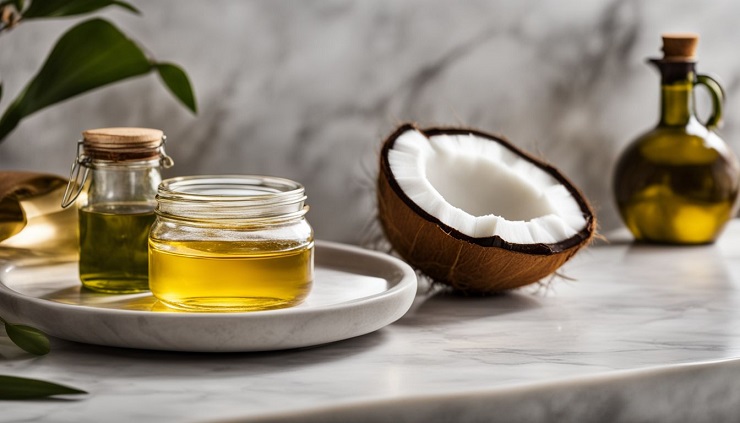
How to Protect Hair When Bleaching Roots
Protecting your hair when bleaching roots is crucial to maintain the health of your hair. Follow these steps on how to bleach natural hair without damage:
1. Start by assessing the current condition of your hair.
Healthy hair can withstand the bleaching process better than dry or damaged hair.
2. Wash your hair 24 hours before you plan to bleach it.
This allows natural oils to build up and protect your scalp and hair from potential damage.
3. Avoid applying the bleach directly on the roots at first.
Start about 1 cm away from the scalp. This prevents any immediate contact with chemicals which could cause burns or irritation.
4. Use a deep conditioner
…after washing out the bleach to repair and hydrate each strand of hair, focusing especially on the root area.
5. Regularly moisturize using natural ingredients
…like hibiscus, aloe vera, or honey to reduce moisture loss during and after the bleaching process.
6. Consider using purple shampoo
…as it helps neutralize yellow tones in blonde hair after lightening, leaving it looking brighter and healthier.
What Can I Add to Bleach to Protect Hair AFTER Bleaching?
After bleaching your hair, it’s important to protect and nourish it to minimize damage and maintain its health. Here are some things you can add to bleach to provide that extra care:
Deep conditioner
After bleaching, apply a deep conditioning treatment to restore moisture and strengthen the hair strands.
Coconut oil
Adding a few drops of coconut oil to your bleach mixture can help minimize dryness and protect against damage.
Avocado
Mash up a ripe avocado and mix it into your bleach for added nourishment and hydration.
Cetearyl alcohol
This ingredient helps seal the cuticle, locking in moisture and adding shine to the hair after bleaching.
Vitamin C powder
Mix some vitamin C powder with water or conditioner before applying it to your hair after bleaching. It can help neutralize any brassy tones.
Homemade Hair Bleach Without Peroxide (or less of it)
Looking for a way to bleach your hair at home without using peroxide or at least minimize it? Try these homemade hair bleach options:
Mix honey and vinegar.
Create a mixture of equal parts honey and vinegar. Apply it to your hair and let it sit for about an hour before rinsing it out. This natural method can help lighten your hair.
Use baking soda and hydrogen peroxide.
Combine equal parts baking soda and hydrogen peroxide to form a paste. Apply the paste to your hair, focusing on the areas you want to lighten. Leave it on for up to 30 minutes before washing it out.
Lemon juice and chamomile tea
Mix lemon juice with chamomile tea to create a lightening solution. Apply this mixture to your hair and leave it on for a few hours or overnight before rinsing it out.
Cinnamon and honey
Make a paste with cinnamon powder and honey, then apply it to your hair. Leave the mixture on for a few hours or overnight before washing it out. This combination can provide natural highlights.
How to Make Hair Bleach at Home with Baking Soda
Making hair bleach at home with baking soda is a simple and cost-effective way to lighten your hair. Here’s how to bleach natural hair without damage using this home ingredient:
1. Mix 1 cup of baking soda with 2 to 3 tablespoons of hydrogen peroxide in a bowl.
2. Stir the mixture until it forms a smooth paste.
3. Apply the paste evenly to your dry hair, making sure to completely saturate each strand.
4. Use a comb or your fingers to distribute the mixture from roots to ends, ensuring all sections of your hair are covered.
5. Leave the bleach on for about 30 minutes, or longer if you want a more dramatic lightening effect.
6. Rinse your hair thoroughly with cold water to remove the bleach mixture.
7. Shampoo and condition your hair as usual.
How to Bleach Hair at Home with Household Products
Bleaching your hair at home is possible with the use of household products. Here are some steps to follow to organically learn how to bleach natural hair without damage:
1. Prepare your hair before bleaching by washing it 24 hours prior to the bleaching session.
2. Section your hair into quadrants to make application easier and more precise.
3. Mix bleach powder and developer according to the instructions on the packaging.
4. Apply the bleach one inch away from the scalp, working downwards through the hair strands.
5. Leave the bleach on for the recommended amount of time specified in the instructions.
6. Rinse out the bleach thoroughly with cold water until the water runs clear.
7. Shampoo your hair using a sulfate-free shampoo to keep it in good condition.
8. Deep condition your hair afterward to restore moisture and nourishment.
Conclusion – How to Bleach Natural Hair Without Damage
In conclusion, learning how to bleach natural hair without damage is possible with the right techniques and products.
By following a step-by-step guide, preparing your hair properly, and using protective measures such as petroleum jelly, you can achieve lighter hair without compromising its health.
Remember to deep condition regularly and consult a professional if needed for the best results.
FAQs
Q: What is the best way to bleach natural hair without damaging it?
A: The best way to bleach your first time includes following a step-by-step guide, applying the bleaching product on damp hair, and using protective styles. You also want to make sure to learn how to bleach natural hair without damage.
Q: Can dark or black hair be lightened at home with DIY methods?
A: Yes! Even dark or black hair can be lightened using natural products such as sea salt, citric acid, and apple cider vinegar. Always perform a strand test before starting the entire head.
Q: How do I keep my curly or coily hair healthy during the bleach treatment?
A: Keep your curly hair’s health in check by regularly doing deep conditioning, getting regular trims, and avoiding strong bleach that could lead to brittle hair.
Q: Is there any specific method for different skin tones or desired color?
A: Yes! The desired color of dye often depends on your original color of virgin hairs and skin tone; for example, blond dyes would show differently on brown vs. black hairs.
Q: Do all types of natural colors need an equal amount of chemical reaction?
A: No, lighter-colored hairs like blonde have an open cuticle structure which makes them easier to lighten than darker hues like brown and black which might require a stronger solution for the required lift. This is why it’s important to understand how to bleach natural hair without damage.
Q: Can I reach my desired lighter tone in one session only?
A: It mostly depends upon how many shades you are trying to go up from your current shade; however, larger leaps usually have orange tones visible initially necessitating multiple sessions.
Q: How can I bleach my natural hair without causing damage?
A: To bleach your natural hair without causing damage, it is important to prepare your hair before the bleaching process. This includes deep conditioning your hair, avoiding heat styling tools, and using hair masks regularly to keep your hair moisturized. Additionally, you should choose a professional-grade bleach and follow the instructions carefully.
Q: Can I bleach my natural hair at home?
A: Yes, you can bleach your natural hair at home without causing damage if you follow the proper steps. It is important to prepare your hair, use the right products, and take proper precautions and know how to bleach natural hair without damage.
Q: How do I prepare my hair before bleaching?
A: To prepare your hair before bleaching, you should avoid washing it for a few days to allow the natural oils to build up, as this can help protect your scalp during the bleaching process. Additionally, you should deep condition your hair and avoid using heat styling tools to minimize damage.
Q: What is the best way to bleach black or dark hair?
A: Bleaching black or dark hair can be challenging, but it is possible to achieve a lighter shade with the right techniques. It is important to lift your hair in stages, using a lower volume developer, and allowing the bleach to sit on your hair for a specific amount of time before rinsing it out. This gradual lightening process helps to minimize damage and achieve the desired results.
Q: Can I bleach my natural hair without using bleach?
A: While natural methods may provide some lightening effects, they are not as effective as using bleach. If you want to significantly lighten your hair color, it is recommended to use a small amount of bleach, applied evenly, to achieve the desired results. This is going to be stronger in its effect, so it’s best to make sure you know how to bleach natural hair without damage.
Q: Is it possible to bleach curly hair without causing damage?
A: Yes, it is possible to bleach curly hair without causing damage. However, it is important to take extra care as curly hair is more prone to dryness and damage. Deep conditioning, moisturizing, and using heat-protectant products are essential steps in understanding how to bleach natural hair without damage, and in protecting and maintaining the health of curly hair during the bleaching process.
Q: How often do I need to bleach my hair to maintain the desired color?
A: The frequency of hair bleaching depends on various factors such as your natural hair color, desired lightness, and the condition of your hair. It is important to consult with a professional hair colorist who can assess your hair needs and recommend the best timeline for touch-ups or color maintenance.
Q: How long should I let the bleach sit on my hair?
A: The duration the bleach should sit on your hair depends on the desired lightness and the manufacturer’s instructions. It is crucial to follow the recommended processing time to avoid over-processing or causing damage to your hair.
Q: What is the best way to keep my hair moisturized after bleaching?
A: After bleaching, it is important to use moisturizing hair masks, leave-in conditioners, and oils to keep your hair hydrated and avoid dryness. Deep conditioning treatments are also beneficial in restoring moisture and nourishing the hair strands.
Q: Can I bleach my hair without damaging the rest of my hair?
A: Yes, you can bleach your hair without damaging the rest of your hair by following proper application techniques. It is important to section your hair and apply the bleach evenly, making sure to avoid overlapping the bleach onto already bleached sections. Additionally, in following how to bleach natural hair without damage, it is crucial to keep the surrounding hair protected with a shower cap or foil during the bleaching process.
